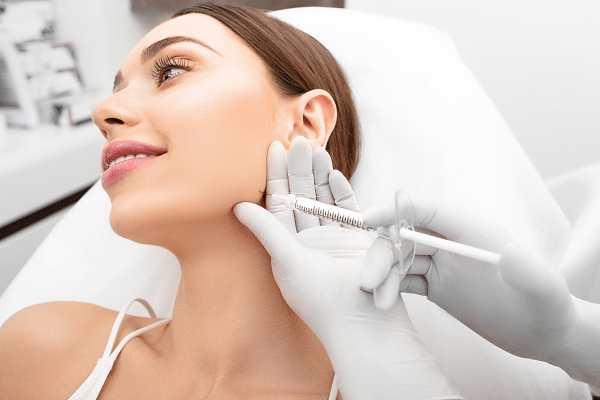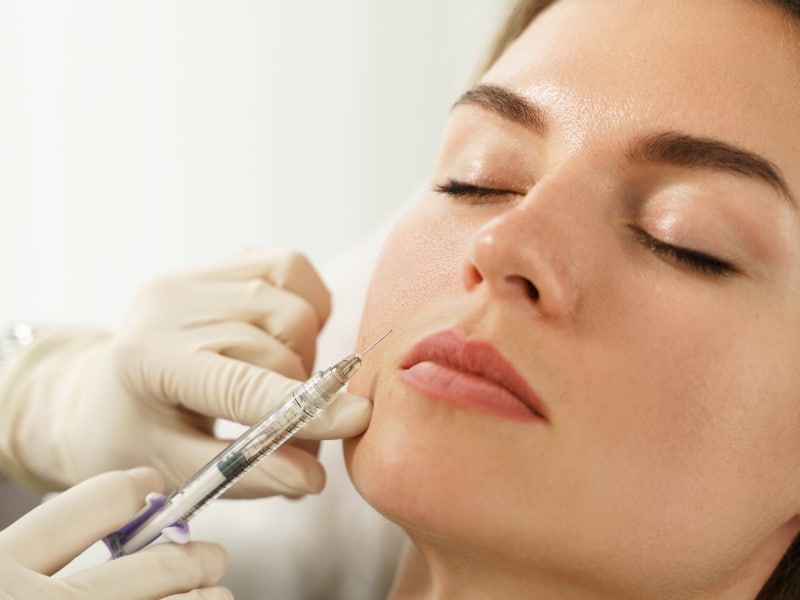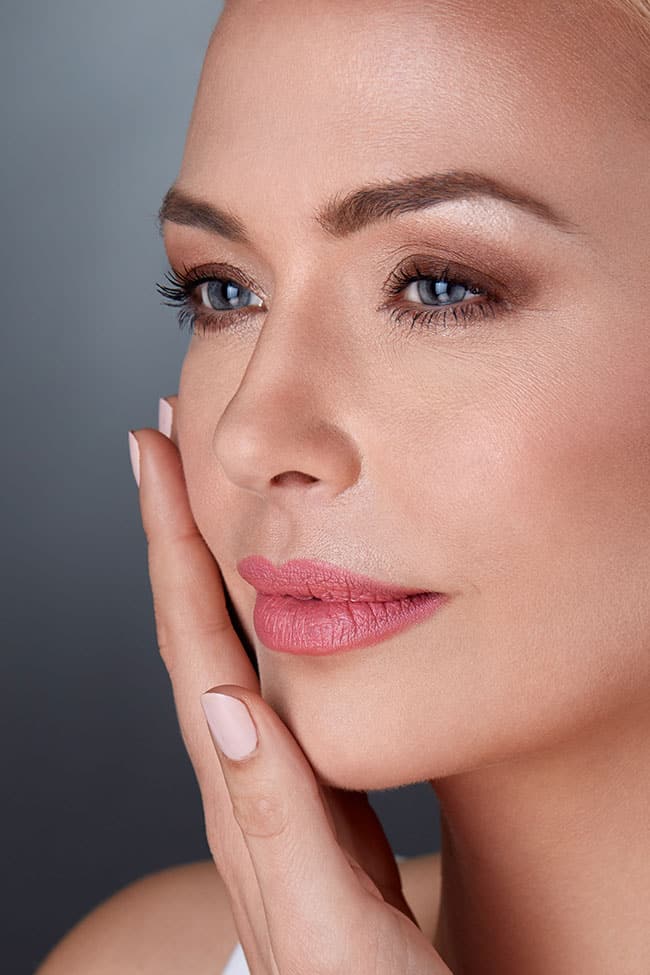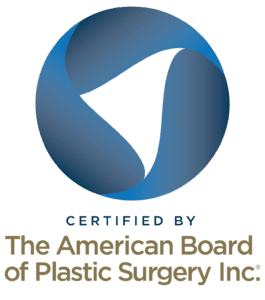As we age, it’s common to experience facial wrinkles and soft-tissue volume loss. These issues can make us and our facial features look older than we like, but there’s good news; You can recapture your youthful appearance with facial fillers! Facial balancing is a non-invasive procedure and results are often impressive and long-lasting.
Below is more information about facial balancing, the available facial balancing fillers, where you can have a dermal filler injected during a facial balancing treatment, and more.
Facial Fillers Overview
Facial fillers (used in facial balancing) are gel-like chemicals injected under your skin to improve volume, smooth wrinkles, and soften creases. A dermal filler can also be used to enhance facial contours and give a more youthful appearance. At least one million people per year in the US choose facial fillers and facial balancing, because facial balancing is often a cost-effective way to recapture your youth without having plastic surgery.
Facial balancing and dermal fillers can address the following issues:
- Smooth out the lines around the mouth and nose, including marionette lines, smile lines, and parentheses.
- Restore lost volume in the temples or cheeks
- Reduce vertical lip lines
- Enhance and plump the lips
- Smooth out chin creases
- Enhance the symmetry of your facial features
Facial balancing fillers are made with several FDA-approved products that plastic surgeons use every day. They are usually classified according to the chemical they are made from. Note: Be sure that your plastic surgeon is using only FDA-approved fillers with your facial balancing, which a doctor can only obtain.
Below are the most common facial balancing fillers used in facial balancing and how they are used.
Hyaluronic Acid (HA)
HA is a substance that occurs naturally that is found in our skin. It helps to keep the skin hydrated and plump, but our bodies tend to produce less of it as we age.
Hyaluronic acid is a gel-like, soft substance, and the results last from six to 12 months. At that point, the body absorbs the chemicals, so you may need to have another injection. Most of these facial balancing fillers contain lidocaine to reduce pain before and after your facial balancing treatments.
FDA approved facial balancing HA fillers include the following:
- Juvederm
- Restylane
- Belotero Balance
Calcium Hydroxylapatite (CaHA)
CaHA is also a substance that occurs naturally in our bodies, mostly in the bones. When used as a facial balancing filler, the calcium particles are almost microscopic and contained in a gel. A CaHA facial balancing filler usually is thicker than HA and can last 12 months or longer for most patients.
CaHA also may stimulate collagen production and can help make the face appear softer and younger, the most common FDA-approved CaHA filler is called Radiesse.
Hyaluronic acid is another very effective substance to be used in treatment. Hyaluronic acid fillers are often used for deeper wrinkles and lines.
Poly-L-lactic Acid

The facial balancing filler will dissipate three or four days after it’s injected, and it’s usually used to treat deep facial wrinkles. The good news is the results can last as long as two years. FDA-approved facial balancing fillers include Sculptra Aesthetic.
Polymethylmethacrylate (PMMA)
PMMA is a biocompatible, synthetic substance that’s been in use for decades in facial balancing treatments. In facial fillers, PMMA remains under the skin for years to offer more support. These dermal fillers used for facial balancing also contain collagen, which is a natural substance in the skin that offers firmness and structure. FDA-approved facial balancing fillers include Bellafill, also called Artefill.
Autologous Fat Injections (Fat Grafting)
Autologous fat injections are the only facial balancing fillers that require surgery, but your results can last for years. Your fat is taken from another part of the body, usually by liposuction.
Your plastic surgeon purifies the fat and injects it into your face to restore volume to your temples, cheeks, or lower eyelids. This is different of other facial procedures like upper eyelid surgery, or chin liposuction. Fat injections require special training to do safely and achieve optimal results. Only a board-certified plastic surgeon should perform this cosmetic surgery.
Which Filler Is Best?
Many FDA-approved facial balancing fillers are available today, so it can be hard to determine the best dermal filler on your own. When trying to determine the best dermal filler for you, you should rely on the skill and experience of your plastic surgeon. Every dermal filler is made to have a specific texture, density, and injection depth.
This means that specific facial balancing fillers work better than others for certain parts of the face. It is key to choose the right filler to ensure proportional facial appearance.
What You Can Expect
If you think you want to have facial filler injections, below is more information about what’s ahead:
- Consultation: Before having a dermal filler, your plastic surgeon will look over your areas of concern on your face and go over your medical history. The risks associated with facial balancing fillers are minimal, but you should be honest about your medical history, including allergies, skin conditions, and medications you take that could affect your recovery. For example, it’s vital to tell your doctor if you take blood thinners, aspirin, ibuprofen, or naproxen because all of them encourage bruising. This will help them determine the best dermal filler for you.
- Procedure: The areas to be injected with dermal fillers are sterilized, and your doctor may put a topical anesthetic on the skin to numb it. Most facial balancing fillers have lidocaine in them, so pain and bruising are minimal. Next, the doctor will carefully inject an appropriate amount of filler under the skin.
- Aftermath: You should see results almost right away after your facial balancing treatment.
- Recovery: You may have minor swelling and bruising after your dermal fillers, but these will fade in a few days. You can go back to work and normal activities after your filler injections.
Questions and Answers
How do you balance a profile with filler?
Instead of targeting specific facial features with dermal fillers, this treatment enhances overall profile harmony. It involves adding chin projection, contouring cheeks, and sharpening the jawline for a slim, defined look with perfect facial proportions.
How long does facial balancing last?
Patients undergoing profile or facial balancing with with different types of facial fillers like hyaluronic acid and Sculptra anticipate results lasting 1-2 years, especially with high-quality, long-lasting fillers.
What is the facial balance procedure?
Facial balancing surgery enhances your look by correcting structural imperfections like a receding chin or prominent nose. Our skilled surgeons use shaping techniques and implants to restore your face’s natural harmony.
Can filler help with sagging face?
Microneedling, Ultherapy, and dermal fillers such as Juvederm Voluma® and Volbella provide a non-invasive and effective solution for sagging facial skin.
How much does facial balancing with fillers cost?
The cost of facial balancing varies based on line depth and required syringes; prices range from $800 to $1,500 per syringe.
Request a Houston Filler Consultation
Interested in having facial balancing fillers to make you look younger? You need to set up a Houston cosmetic surgeon consultation with Dr. Ashley Steinberg today. She’ll talk to you about the benefits and risks of using fillers and determine if you’re an ideal candidate.
References
- Face Filler Costs Before And After. (2019). Retrieved from https://www.glamour.com/story/face-fillers-costs-before-after
- Wrinkle Treatment and Facial Fillers. (n.d.). Accessed at https://www.facialesthetics.org/patient-info/facial-esthetics/wrinkle-treatment/facial-fillers-injections/
- What Are Injectable Dermal Fillers? (n.d.). Accessed at https://www.americanboardcosmeticsurgery.org/procedure-learning-center/non-surgical/injectable-fillers-guide/













